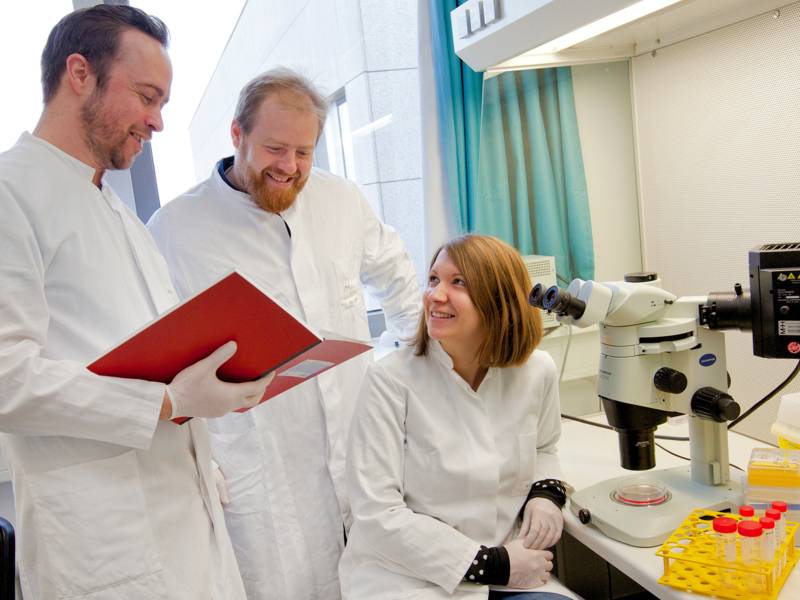Gene therapy for rare blood condition
MHH researchers develop cell and gene therapy that affords better protection against disease pathogens.
Scientists at Hannover Medical School (MHH) have achieved a first: they have developed a successful cell and gene therapy for a genetic infectious disease. It appears to be a promising treatment for a rare and life-threatening condition called ‘Mendelian susceptibility to mycobacterial disease’ (MSMD), in that it protects sufferers from mycobacterial pathogens. The researchers published their findings in Blood, the prestigious journal of the American Society for Hematology (ASH).
The human immune system is equipped with a wide variety of blood cells that enable it to combat different pathogens on a daily basis. Weakening of the immune system can lead to patients suffering from serious infectious diseases. One specific cause of this may be DNA mutations that lead to the body’s scavenger cells (macrophages) no longer working, which means that pathogens such as mycobacteria can no longer be properly eliminated. One situation in which this occurs is where MSMD is present; here, patients are affected by severe infections (which, in some cases, prove fatal) caused by mycobacteria. MSMD is a genetic condition that manifests itself in early childhood, and for which no effective curative treatment is yet available.
An international team led by Dr Nico Lachmann (from the Institute of Experimental Haematology and the REBIRTH Cluster of Excellence) has now, and for the first time, paved the way for an effective and sustained therapy for MSMD. "For the most serious form of MSMD, namely IFNgR1 deficiency, we have developed gene vectors that allow us to correct the genetic defect in the target cells and thus restore macrophage function,” says Dr Lachmann. The team of scientists and physicians from Hannover, Italy, France and the USA has already succeeded in demonstrating the efficacy of this novel therapy in a mouse disease model. "The treatment works so well that only a few genetically corrected cells are needed to protect the entire organism from serious mycobacterial infections,” adds Dr Miriam Hetzel, who shares lead authorship with Dr Adele Mucci (formerly of MHH, now at the San Raffaele Hospital in Milan) and Patrick Blank of TWINCORE. After being transplanted, the genetically corrected blood stem cells migrate into the bone marrow where they immediately begin to form the scavenger cells that have been lacking. The investigators were surprised that the newly formed scavenger cells subsequently migrated very speedily into the various organs to do their job there. "We were delighted at how effectively and rapidly this therapy exerts its protective effect,” comments Dr Lachmann, who is already working on transferring it to human application.
The fact that only a small number of corrected cells are needed for this treatment gives cause for hope that it can soon be transferred into clinical practice. "Building on these findings, we are currently working on replacing only the defective scavenger cells with healthy cells in the lungs. This form of cell-based therapy will then open up whole new horizons in regenerative medicine,” Dr Lachmann says.

